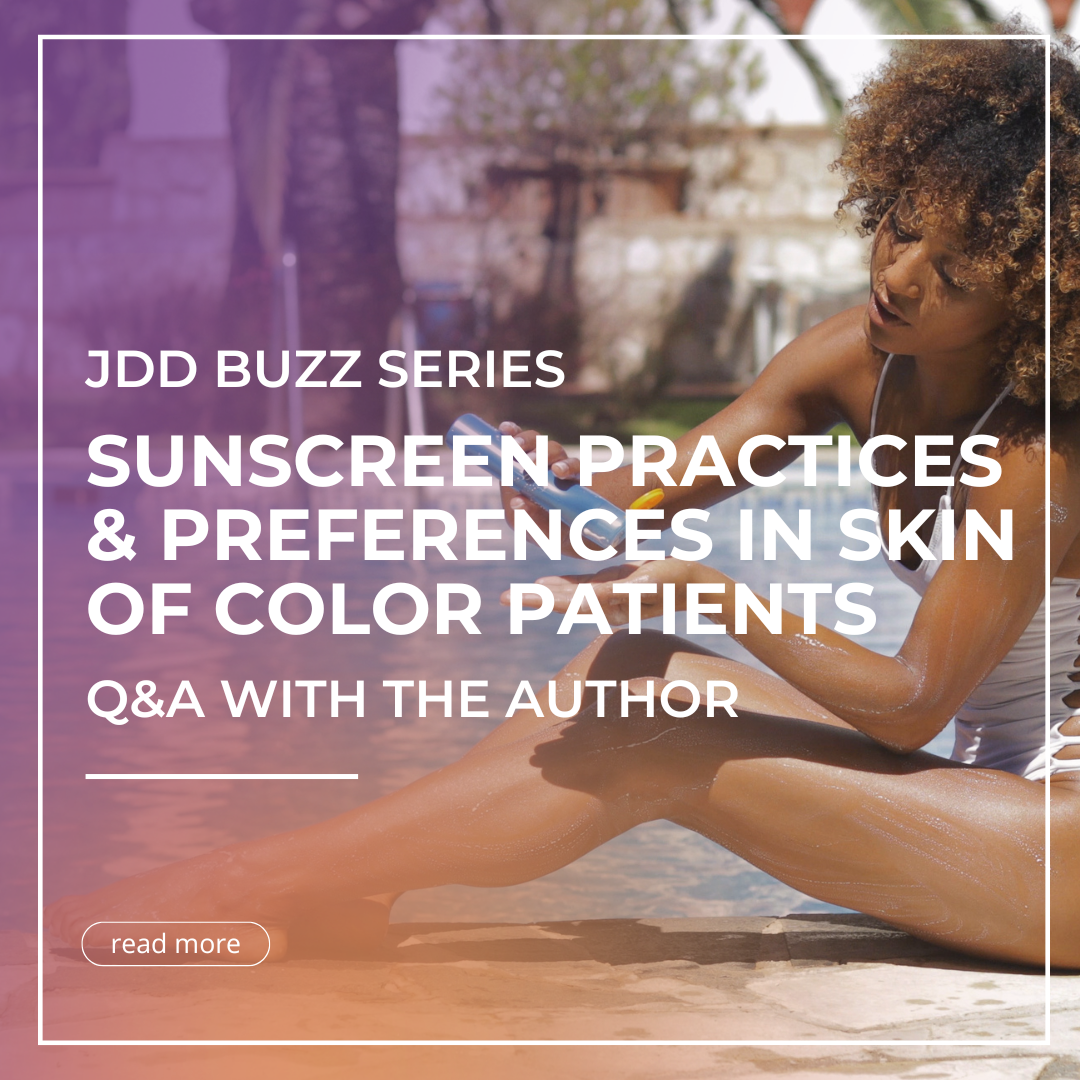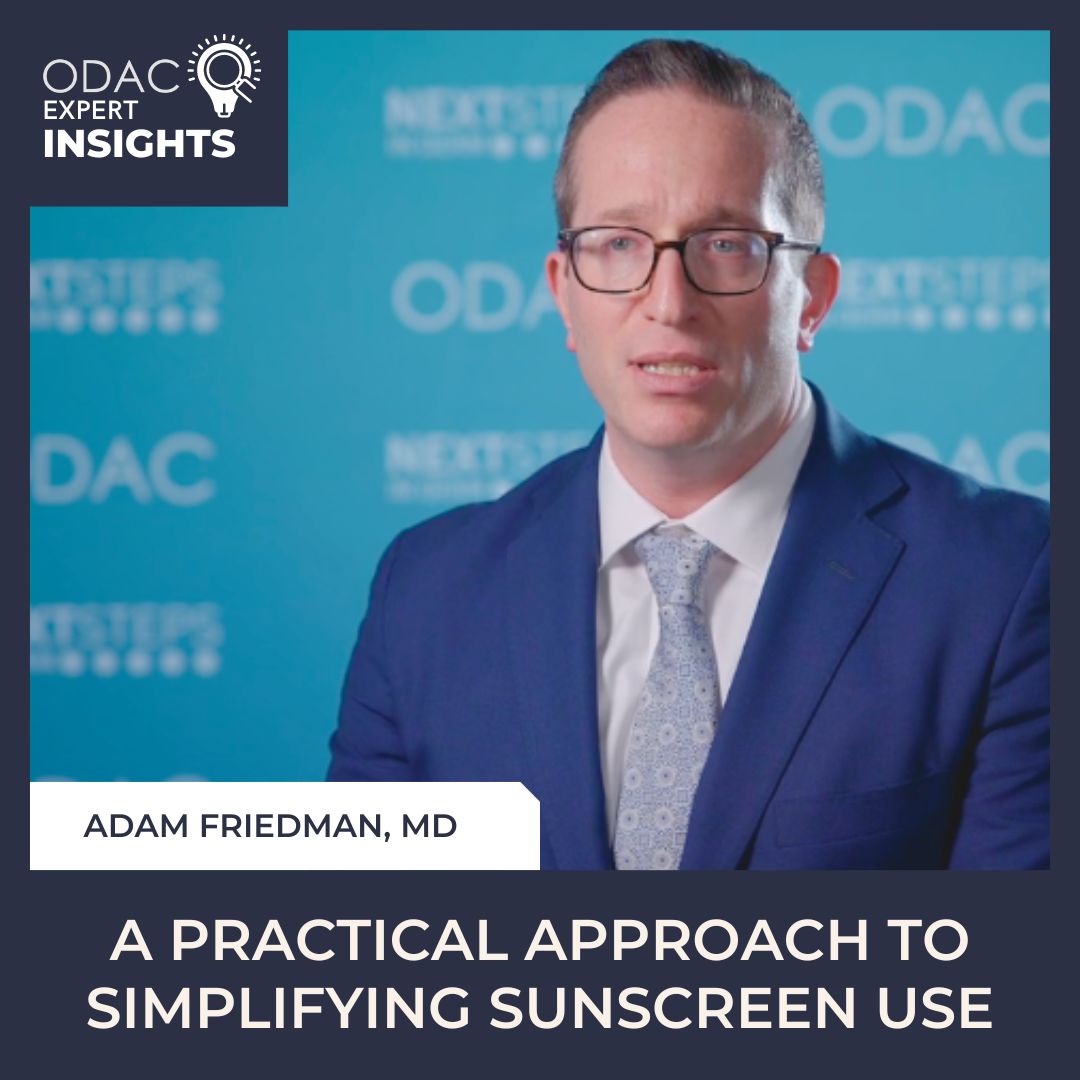JDD July 2024 Issue Highlights
 This July, the Journal of Drugs in Dermatology (JDD) is proud to present a special edition focused on "Bridging the Gap in Dermatology." Our Editor's Picks this month highlight groundbreaking research and discussions aimed at promoting inclusivity, representation, and innovation in dermatologic care. From advancements in sun protection to the role of social media in healthcare, these pieces provid …
This July, the Journal of Drugs in Dermatology (JDD) is proud to present a special edition focused on "Bridging the Gap in Dermatology." Our Editor's Picks this month highlight groundbreaking research and discussions aimed at promoting inclusivity, representation, and innovation in dermatologic care. From advancements in sun protection to the role of social media in healthcare, these pieces provid …
 This July, the Journal of Drugs in Dermatology (JDD) is proud to present a special edition focused on "Bridging the Gap in Dermatology." Our Editor's Picks this month highlight groundbreaking research and discussions aimed at promoting inclusivity, representation, and innovation in dermatologic care. From advancements in sun protection to the role of social media in healthcare, these pieces provid …
This July, the Journal of Drugs in Dermatology (JDD) is proud to present a special edition focused on "Bridging the Gap in Dermatology." Our Editor's Picks this month highlight groundbreaking research and discussions aimed at promoting inclusivity, representation, and innovation in dermatologic care. From advancements in sun protection to the role of social media in healthcare, these pieces provid … 

 Sunscreen use varies among different racial groups despite its scientifically proven benefits. A cross-sectional, questionnaire-based study in the June issue of the Journal of Drugs in Dermatology aims to understand the needs and challenges people with skin of color face when choosing and using sunscreen.
I interviewed author Jared Jagdeo, MD, MS, associate professor of dermatology and director …
Sunscreen use varies among different racial groups despite its scientifically proven benefits. A cross-sectional, questionnaire-based study in the June issue of the Journal of Drugs in Dermatology aims to understand the needs and challenges people with skin of color face when choosing and using sunscreen.
I interviewed author Jared Jagdeo, MD, MS, associate professor of dermatology and director …  In this June edition of the Journal of Drugs in Dermatology (JDD), we're excited to showcase a selection of groundbreaking research and expert insights that delve into the latest advancements and treatments in dermatology. From innovative acne scar therapies to in-depth analyses of topical acne treatments, this month's featured articles provide a comprehensive overview of current dermatological …
In this June edition of the Journal of Drugs in Dermatology (JDD), we're excited to showcase a selection of groundbreaking research and expert insights that delve into the latest advancements and treatments in dermatology. From innovative acne scar therapies to in-depth analyses of topical acne treatments, this month's featured articles provide a comprehensive overview of current dermatological …  You may want to make an extra effort to encourage your young adult patients to protect their skin from the sun. Recent surveys, as noted in The New York Times, showed that adults born after 1997 – those considered in Gen Z – were more likely to believe sun safety myths, including that daily sunscreen usage is more harmful than sun exposure.
Experts say that misinformation in this age group …
You may want to make an extra effort to encourage your young adult patients to protect their skin from the sun. Recent surveys, as noted in The New York Times, showed that adults born after 1997 – those considered in Gen Z – were more likely to believe sun safety myths, including that daily sunscreen usage is more harmful than sun exposure.
Experts say that misinformation in this age group …  There’s never a wrong time to address photoprotection – including sunscreen use – with your patients, says Dr. Adam Friedman, co-chair of the ODAC Dermatology, Aesthetic & Surgical Conference. Next Steps in Derm, in partnership with ODAC, interviewed Dr. Friedman, who shared some of the challenges in getting patients to properly and consistently use sunscreen. Learn Dr. Friedman’s appr …
There’s never a wrong time to address photoprotection – including sunscreen use – with your patients, says Dr. Adam Friedman, co-chair of the ODAC Dermatology, Aesthetic & Surgical Conference. Next Steps in Derm, in partnership with ODAC, interviewed Dr. Friedman, who shared some of the challenges in getting patients to properly and consistently use sunscreen. Learn Dr. Friedman’s appr …